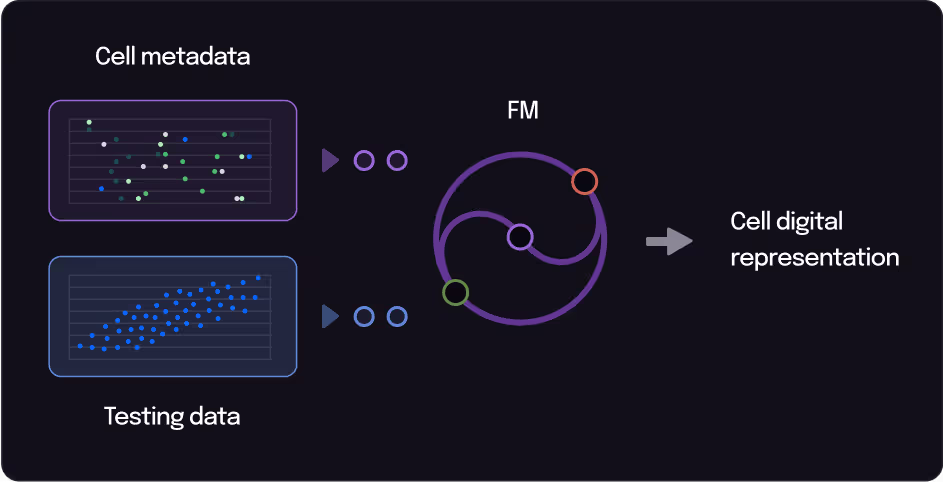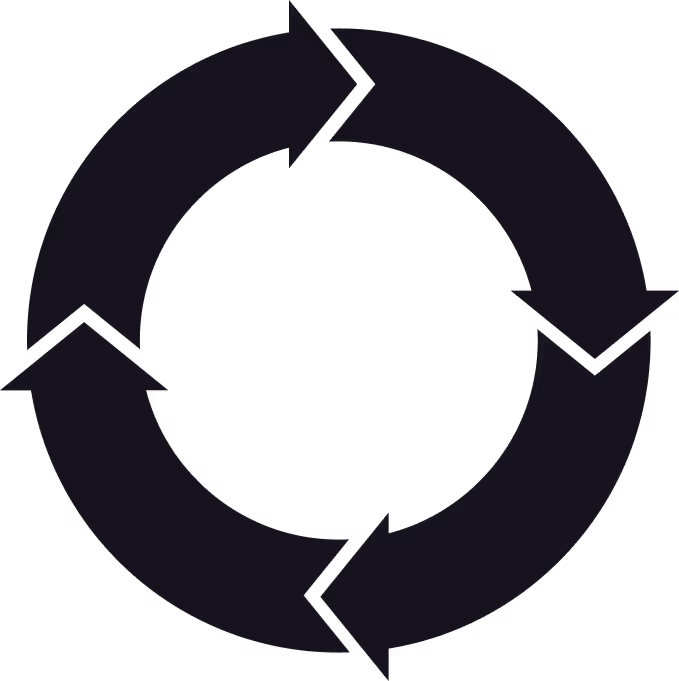
Artificial Intelligence
We build the first AI-powered battery intelligence
Fast-Track Battery Innovation through AI -Generated Synthetic Data
Traditional battery modelling is slow and resource-intensive. Our AI-driven approach reduces time and cost by generating synthetic data for all key performance and lifetime modalities. This enables rapid prototyping, faster iteration cycles, and improved decision-making for R&D and production teams.
Try out Sphere’s APEX Model -Simulate Before You Build
We’ve developed the first generative pre-trained transformer model for battery development using over 4,000 battery cell tests to predict end-of-life aging and performance. Unlock faster development by leveraging your data with a company-wide battery AI model.
Run a Proof of Concept with us
We offer a structured approach to testing our technology with your battery data:
Pre-Trained Model Deployment: Leverage our existing AI-driven Product EXcellence models for quick initial evaluations.
POC Collaboration: Work with us to test the simulation power on your data.
Model Deployment & Customization: Fine-tune the AI model based on your specific battery systems.

Key Benefits for Your Organization

Reduce Time & Cost
Minimize expensive physical testing through AI-generated synthetic data.
Comprehensive Performance Insights
Predict battery behaviour across multiple conditions, including aging, temperature, and performance shifts.
Scalability
Applicable across different cell chemistries with minimal adjustments.
Predict. Optimize. Accelerate.
Our Approach to AI-Powered Time-Series Modeling. From raw battery data to actionable predictions.

Time-Series Foundation Models
Our AI combines both static (cell properties, material specs) and dynamic (cycling data, environmental conditions) data to build a robust foundation model.
From Prediction to Perfection - AI for Battery Development
Our approach draws inspiration from Large Language Models (LLMs) and adapts their architecture to process time-series data efficiently. Just as LLMs predict word sequences, our AI predicts battery performance and degradation over time.

1. Smart testing strategy
Innovative high-accuracy tests informed by AI model.

2. AI simulation output
High-fidelity battery simulations powered by AI models.

4. Bayesian optimization: next best test
AI-guided to identify the next best test.

3. Confidentiality analysis of simulation
Secure analysis ensuring simulation data confidentiality.

Results of Sphere's APEX Simulation Model
- Simulate new cell type
Predicting the discharge capacity fade over time

Predicting voltage fade at any given cycle

- Simulate new current profile




Proven Success. Measurable Impact.
Our method surpasses both traditional ECM/FEM simulations and pure deep learning models by offering:
Higher Adaptability: Learns from large-scale datasets and continuously improves.
Scalability: Works across different cell chemistries with minimal re-training.
Real-Time Performance: Fast inference times compared to physics-based simulations.
| Traditional Modeling Modelling of specific battery cells based on ECM or Finite-Elemente-Methode | Sphere Foundation AI Approach Foundation AI based multi chemistry modelling. | |
|---|---|---|
| Model Training Complexity | High Requires detailed understanding of physics and chemistry, complex meshing, and material properties. | Moderate to High Requires large datasets for training, but less domain-specific expertise once the AI model is pre-trained. |
| Input Data Needed to Fine-Tune Models | Physical & chemical data Detailed experimental data, material properties and cell design specs | Large-scale time series data Historical usage data, charge/discharge cycles, environmental conditions. |
| Simulation Speed | Slow FEM sim are computationally intensive, especially for 3D models. ECMs are faster but less detailed. | Fast Once trained, AI models can simulate quickly, often in real-time or near real-time. |
| Prediction Accuracy - General | High for specific phenomena Accurate when parameters are well-defined and calibrated. | Potentially higher and adaptive Improves with time & more data, capturing complex patterns and anomalies. |
| Prediction Accuracy - State of Health (SOH) | High when specific degradation mechanisms are well-understood and modeled. | Potentially higher for long-term predictions, leveraging large datasets and continuous learning. |
| Self learning capabilities | None every model needs to be trained again when design changes are introduced | High the model grows over time and implements learning to improve its ability to predict performance and identify anomalies |
| Include other (than time series data) sources into simulation | Not possible | High Including e.g.: tear down images, SEM of macroscopic features |
| Generalizability Across Cell Chemistries | Limited requires re-parameterization and validation for different chemistries | High can generalize, applicable to various chemistries with minimal re-training. |



